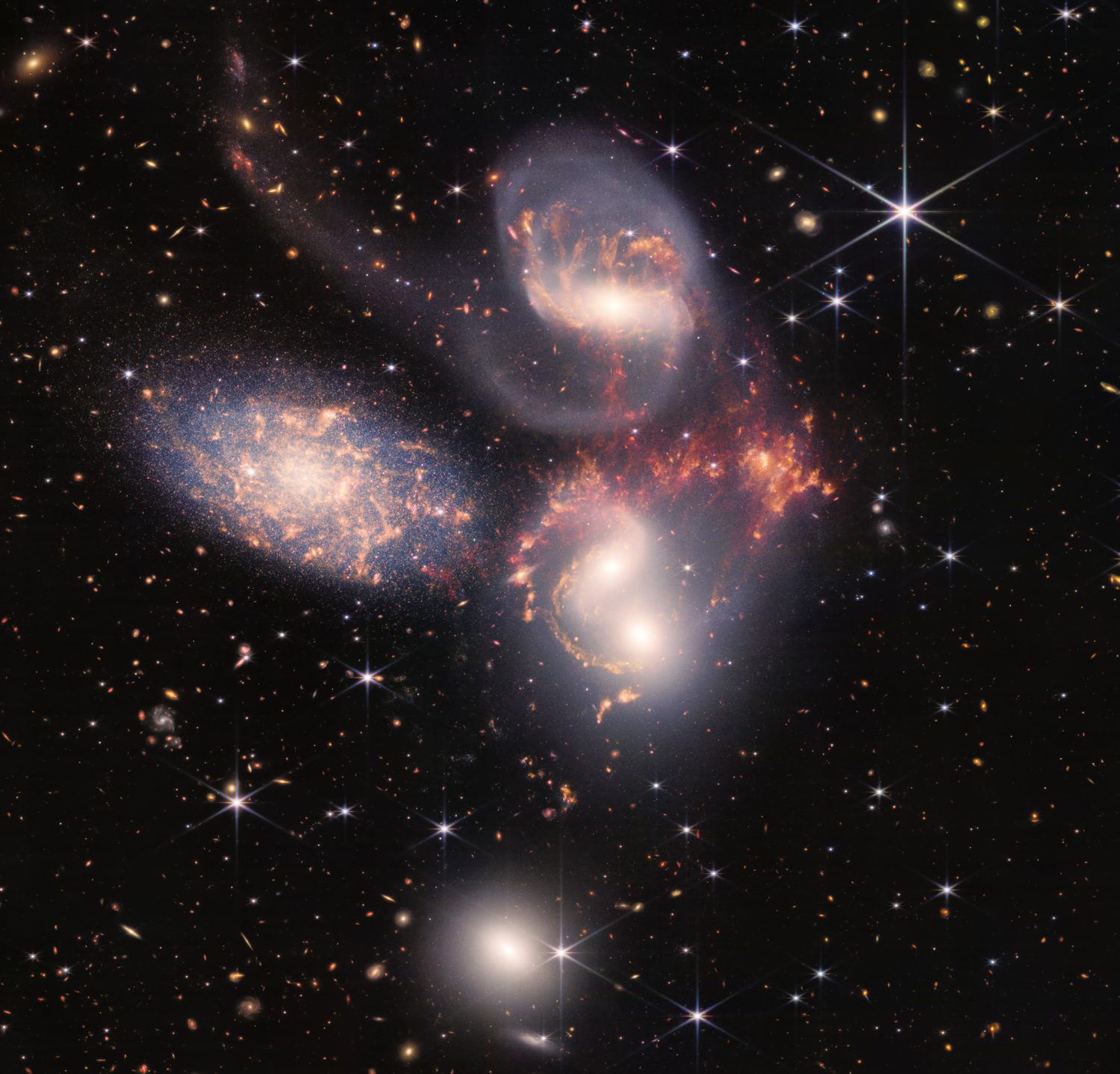By now, it’s likely that hundreds of millions of people around the globe have seen the first images from the James Webb Space Telescope. The pictures are impressive, yet the science behind the technology as well as the science involving the observations is incredible.
The first picture that NASA showed the world at large is titled Webb’s First Deep Field. The instrument used, the Near-Infrared Camera (NIRCam for short), spent 12.5 hours composing images from different infrared wavelengths aimed at the galaxy cluster SMACS 0723. SMACS 0723 is 4.6 billion light years away, so it makes sense that these images are what the galaxy cluster looked like 4.6 billion years ago. Astronomers chose this galaxy cluster because its combined mass acted as a gravitational lens and magnified the infrared waves coming from galaxies behind it.
The second “image” provided was a measurement of the atmosphere of an exoplanet named WASP-96 B. The instrument used analyzed the changes in the brightness of precise colors of light to determine the presence of water, likely in the form of clouds and haze surrounding a hot gas giant planet.
The third image captured was of a dying star catalogued as Planetary Nebula NGC 3132. It’s only 2,500 light years away. The star has been spewing gas and dust for thousands of years and the image is spectacular.
Image number four is of a cluster of five galaxies named Stephan’s Quintet that was discovered 150 years ago before space telescopes were on anyone’s list of future options. More than 1,000 images were used to construct this detailed picture.
The fifth and final image, a star forming region titled NGC 3324 in Carina Nebula, demonstrates the vast amounts of gases and solar winds emitting from the formation of young stars.
I found an excellent article written by Monisha Ravisetti and Jackson Ryan for CNET that provides an explanation of the science unveiled in each of these selected images. It’s a 10- minute read but worthwhile and shorter than digging through longer explanations elsewhere.
It’s estimated that the James Webb Space Telescope will be able to collect images like this for the next 20 years or until its fuel is exhausted, whichever comes first. I’m sure that its potential contribution to the field of astronomy and science is incalculable at this point. A statement that accompanied the first image triggered an unusual reaction for me. The statement, “this slice of the vast universe is approximately the size of a grain of sand held at arm’s length by someone on the ground.” When I read it, I thought about how small and insignificant our planet is in the universe.
No one that I know of expects us to send humans to planets other than Mars during most of our lifetimes. These thousands of galaxies seen in image number one are billions of light years away. Unless some of the theoretical concepts like warp drives and wormholes come to fruition, humans will not travel beyond our solar system for a long, long time.
If deep space travel is not possible for centuries, if ever, what will humanity gain from observations collected from the JWST? The field of physics will advance substantially. In an article published by NASA in 2019, Elizabeth Landau writes about 10 of Albert Einstein’s theories that were proven true thanks to space and technology innovations. I think JWST will prove more and not just Einstein’s.
Are there other areas where we will advance? I hope political and business leaders around the world will reflect on the need to focus on solutions here on Earth to improve life for everyone. It’s time that politicians ignore their self-serving focus on being re-elected and focus on making life better for everyone. It’s time that business leaders choose to do what’s best for customers, employees, and shareholders over the long run and not just next quarter or next year. We need more collaboration at the top to solve some of our long-standing global issues like climate change, undernourishment and starvation, lack of adequate water supplies, lack of adequate and affordable housing, lack of affordable and quality health care for all, lack of quality education, and so forth. We need to address these issues globally and locally. Ignoring these issues because you personally are not impacted should not be a choice. If global collaboration allows us to build a telescope that we send a million miles away from earth to collect images of celestial objects billions of light years away, then we should be able to identify and implement solutions to some of our basic problems here on Earth.











